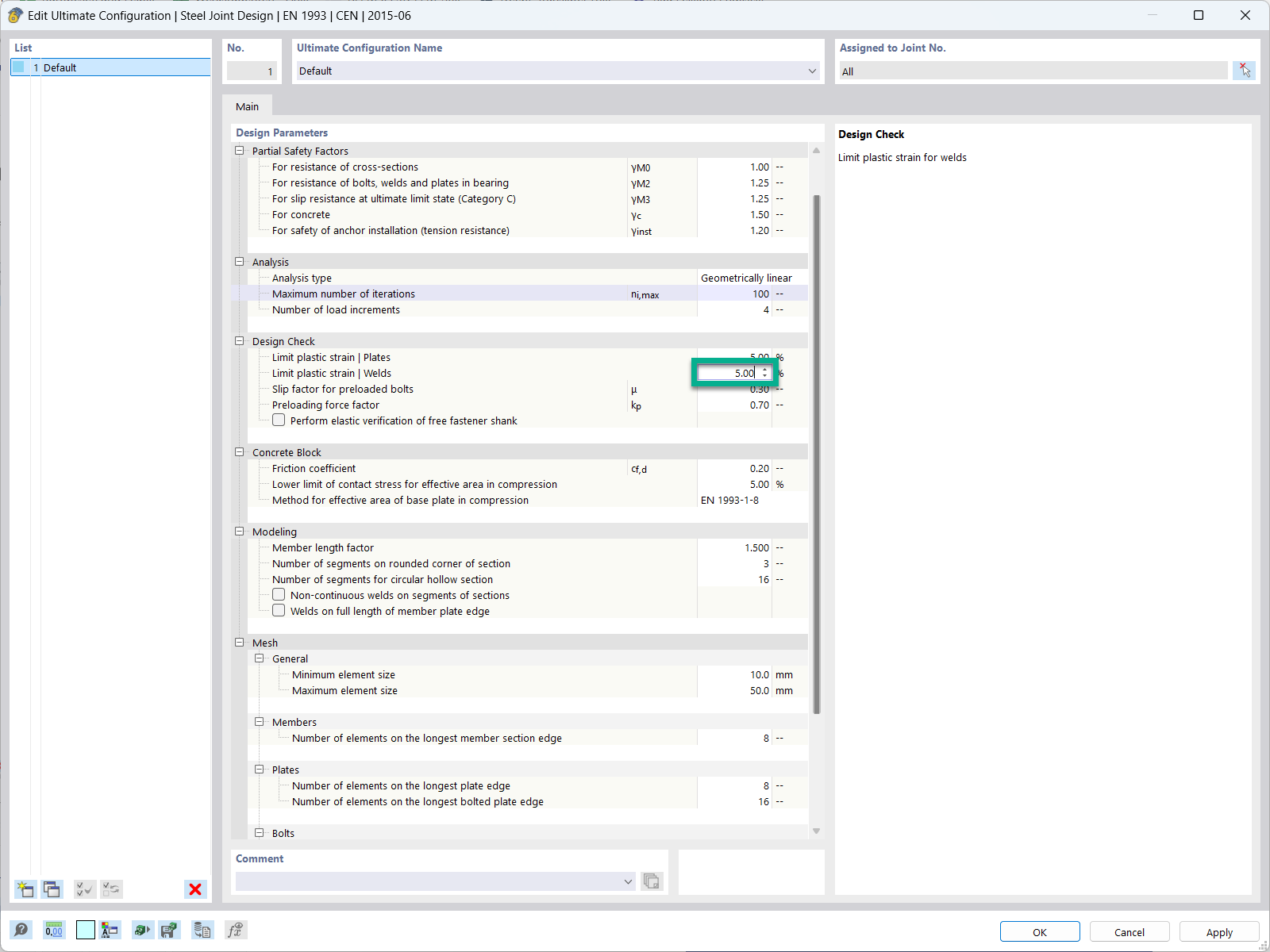1. You can simplify the modeling considerably if you use the "Generate Surfaces from Members" function. This gives a basic framework for further modeling.
2. You can create intersections between lines and surfaces with the "Connect Lines/Members" option.
3. The connection of an end plate can be produced by a contact solid. It should be noted that the contact surfaces must have exactly four lines. Then, it is possible to implement the option of failure under tension. Friction can also be simulated between the surfaces; however, you should use it sparingly with such nonlinearities, because it has a strong impact on the stability of the numerical model, above all.
4. With the use of holes in a solid, you should remember that one opening is insufficient; therefore, you should also create a surface area between the openings in the contact surfaces to separate them from the solid.
5. The load transferred by screws, which can be modeled with members, is carried out using rigid surfaces in order to avoid singularities. Failure under pressure can be generated by a member end release.
6. If you need to create larger parts of a model, but only one connection is to be examined in detail, you can build the rest of the model using members. It should be noted that the load transfer between the surface model and the members is best modeled with rigid surfaces in order to avoid singularities here as well.
7. At this point, you may also consider the use of parametrization and creating a block; thus, integrating the assembly into an existing member system can be done without problems.
In this specific case, the deformation of the surface model corresponds with the deformation of the member exactly to up to one percent when applying the stiffness in RF‑FRAME‑JOINT Pro.












































_1.jpg?mw=350&hash=ab2086621f4e50c8c8fb8f3c211a22bc246e0552)






.png?mw=600&hash=49b6a289915d28aa461360f7308b092631b1446e)










